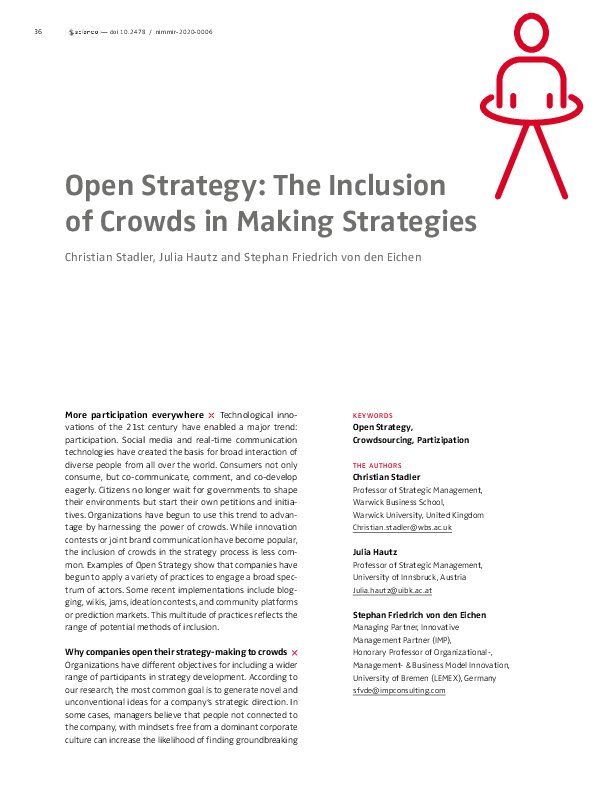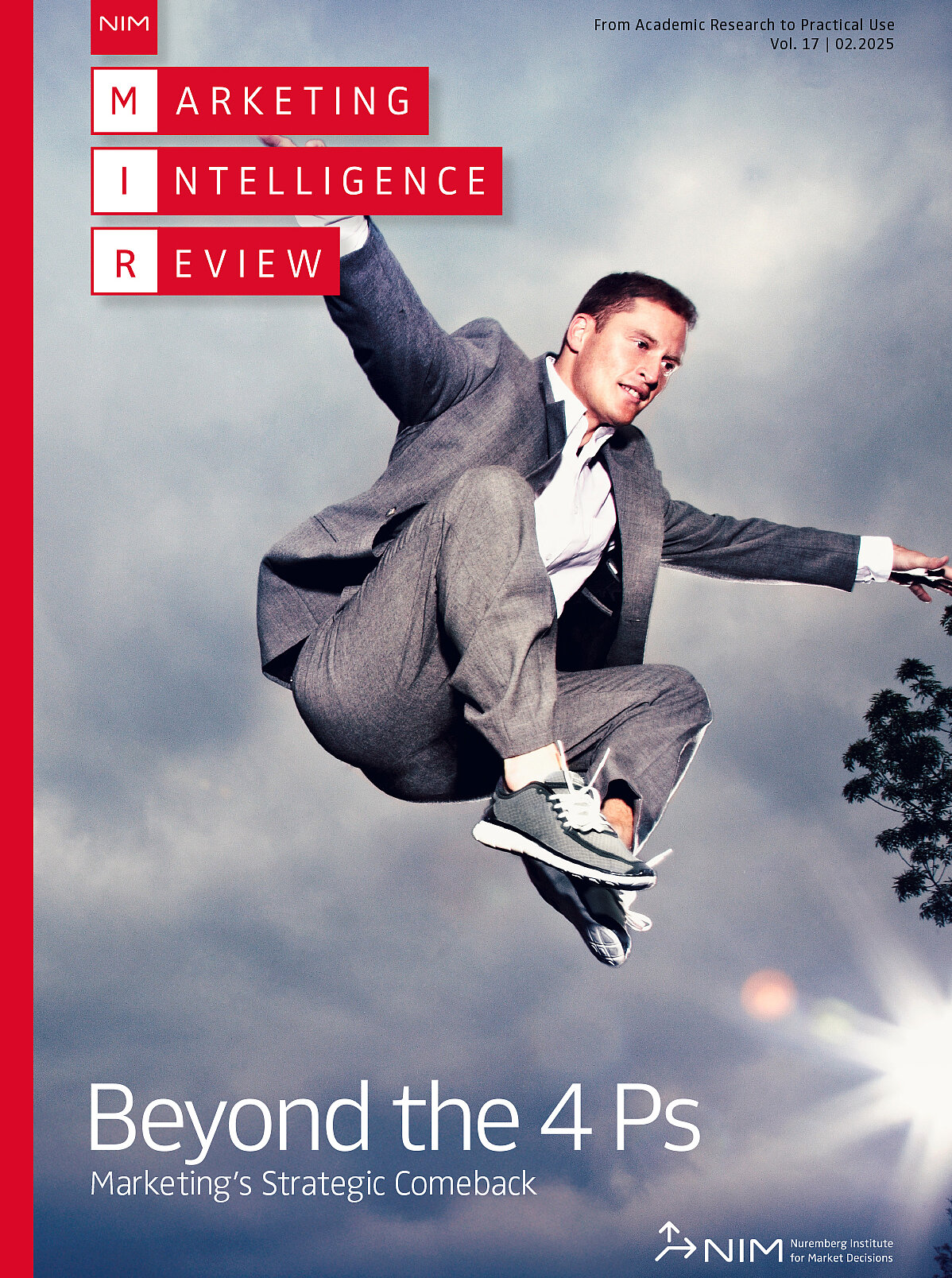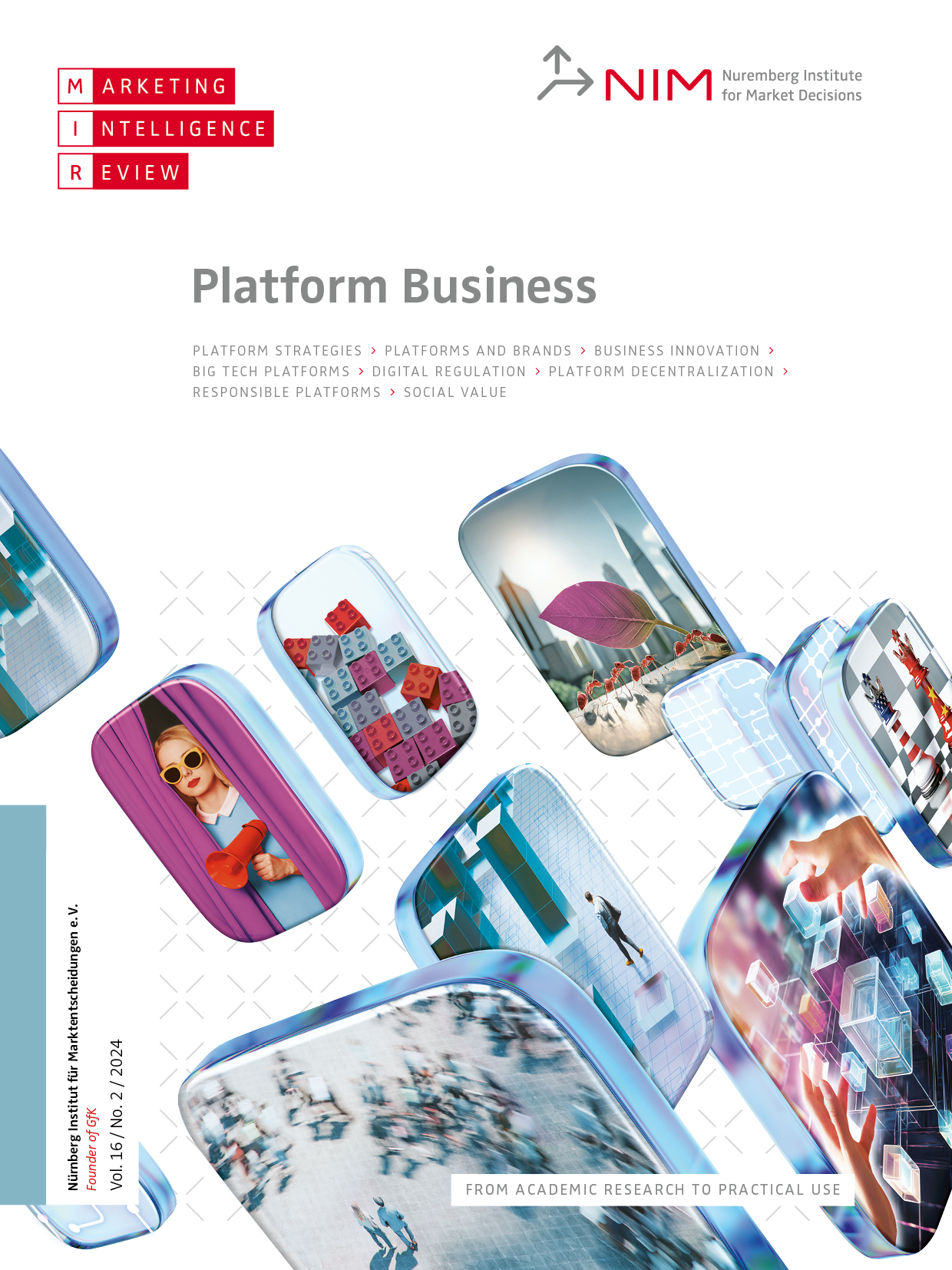Open Strategy: The Inclusion of Crowds in Making Strategies
Christian Stadler, Julia Hautz and Stephan Friedrich von den Eichen
While innovation contests have become very popular, the inclusion of crowds in the strategy process is less common. Some recent implementations are blogging, wikis, jams, ideation contests and community platforms or prediction markets. The most common goal of using crowds in strategy is to generate novel and unconventional ideas concerning a company’s strategic direction. Also, increasing internal participation and including employees on a larger scale can improve the implementation of a strategy. Other organizations state that by including a broader set of stakeholders, they can make the strategy formation process more transparent and comprehensible to the general public or their customers, which makes them able to increase external acceptance. On the other hand, the inclusion of larger audiences increases complexity, and involving employees makes it more difficult for managers to remain in control. Projects need to be well-conceived, well-planned and well-funded. Organizations need to remain flexible, learn from experiences and be ready to adjust tools and activities whenever necessary.

![[Translate to English:] [Translate to English:]](/fileadmin/_processed_/d/f/csm_matzler_intro_vol_12_no_1_de_15bce166b7.png)
![[Translate to English:] [Translate to English:]](/fileadmin/_processed_/f/4/csm_2020_nm_mir_crowdinnovation_de1_3308f94fe5.png)
![[Translate to English:] [Translate to English:]](/fileadmin/_processed_/6/f/csm_dahlander_piezunka_vol_12_no_1_de_b03be64099.png)
![[Translate to English:] [Translate to English:]](/fileadmin/_processed_/0/9/csm_2020_nm_mir_crowdinnovation_de2_87c2678243.png)
![[Translate to English:] [Translate to English:]](/fileadmin/_processed_/4/e/csm_kohler_chesbrough_vol_12_no_1_de_9adccaf75f.png)

![[Translate to English:] [Translate to English:]](/fileadmin/_processed_/7/a/csm_2020_nm_mir_crowdinnovation_de4_a8e3692d0c.png)


